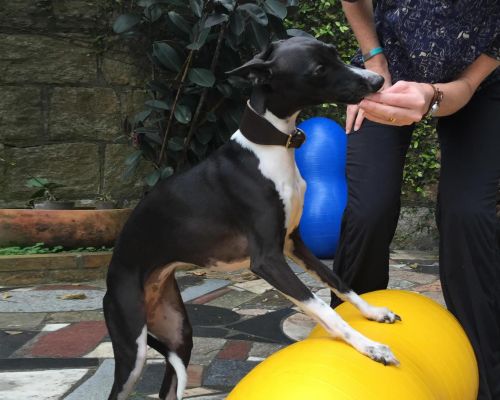We want our pets to join us hiking Hong Kong’s great country park trails, swimming off our fabulous beaches and playing with their mates at the dog park. But it is important not to overload the growing puppy with their developing joints and open growth plates.
A common misconception about physical therapy for puppies is that it is only necessary after an injury has occurred. Puppies often place heavy demands on their musculoskeletal system during their play which can affect their development.
It’s also a good time to identify any risk factors in your puppy to limit injuries as they grow.
Physiotherapy in puppies aims to:
Developmental bone and joint problems are seen in many different dog and cat breeds, and even cross breeds. Joint problems commonly seen in growing pets include:
These conditions can be painful during a pet’s growing phase, and equally difficult to identify for owners. It may just be a telltale sign in their movement that add a suspicion and warrants further assessment. The earlier that we identify issues, the better the opportunity to focus on strengthening their core and supporting muscles to the affected areas, keeping them fit for life.

Puppies are prone to injuries which may affect them for the rest of their lives. Their soft bones are continually growing and developing relative to the forces of activity and movement. Safe activities for puppies are based on the expected time for the growth plates in the long bones to close - generally they will stop growing between 12- 18 months. This is very important because the growth plates can easily be injured with high impact activity. Their soft bone are also at risk of injury from accidents such as falling off furniture and rough play.
By considering the type of injuries an animal could be exposed to, we can tailor conditioning programmes to strengthen weak areas and prevent injury, as well as manage it. Therapeutic exercise and manual therapies are largely used in this area.

Exercises are designed to be muscle and joint-specific depending on the puppy’s needs. Important factors to be considered include the breed, size and age of the puppy. Slowing down movement and improving balance helps to build confidence and awareness in your puppy, preventing risk of injury and encouraging appropriate development. This is also a great time to focus in on safe puppy socialisation. Various training equipment is utilised to match your pet’s needs and ability.

Joint supplements are recommended in puppies, especially those large breeds prone to hip dysplasia, and small breeds doge prone to patella luxation. Joint supplements should contain key ingredients of glucosamine, chondroitin and Omega-3 fatty acids, such as those available in bioactive green lipped muscle and deer velvet. These can help support joint health and comfort, as well as protect the joint structures from wear and tear.

Many specialised ‘hands-on’ techniques encouraged, along with massage to help support muscle development with growth. A regular routine of stretching and massage with focus on known areas of stress can be very beneficial to ensure your puppy’s continued fitness.

Weight management needs consideration of both calories and macro nutrients. Some breeds of dog are prone to weight gain, especially adolescents after neutering. Let us guide you how to maintain your puppy’s optimal growing weight.

The Stance Analyser quantifies your dog’s weight distribution through each leg to provide an accurate reading and removes the guesswork involved. The readings help to identify problem areas as part of the physiotherapy consultation and we can monitor your pets' ongoing therapy and response. This is a fast, simple and non-invasive way to monitor your pet’s stance.
Our process for puppy fitness
1
Initially we need to collect as much information as possible about your pet and your concerns; we will send you a detailed online questionnaire to complete. We will also reach out to your family veterinarian and /or specialist for your pet’s full medical history.
2
At our physiotherapy initial consultation, we assess the gait and movement of your pet, review their medical history and perform a thorough physical assessment to understand individual requirements and fitness needs.
3
Working together with you, we then tailor a conditioning programmes which meets the needs and goals of your individual pet. The programme will generally include a variety of therapies and home care for you to continue at home, alongside our treatments.
4
We are here to support your pet’s fitness journey, as much or as little as you need us. Online consultations and video reviews can help to keep you on the right path.